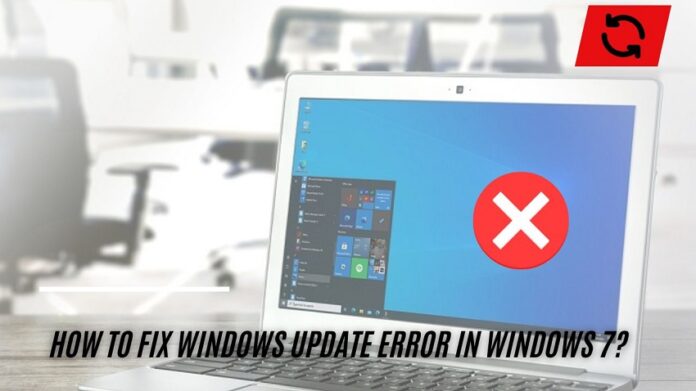Because the system can install an update on its own, Windows updates normally take place fast and without any problems, ensuring that the OS runs without any disturbance. However, occasionally user preferences or other hardware issues prohibit this operation from working properly. Users assert that it is a widespread issue that affects individuals.
Updates to a new installation of Windows 7 either fail to complete or are not successful. Updates that have become stopped or stuck as well as procedures that aren’t running correctly, can all be fixed. However, these operating system updates can occasionally display problems and even freeze sometimes.
It’s routine to update your devices using the best free driver updater. Therefore, it’s upsetting when you can’t update Windows 7 to a newer version or upgrade any of your programs. Such issues with Windows Updates can be brought on by several issues and substantially impact your system performance.
Because some people switch off the automatic updates and forget about it, the question of why you can’t update Windows 7 is common. Actually, because virus contacts are unavoidable, experts and malware researchers do not advise it. If your operating system has vulnerabilities and you are not automatically updating the system, you leave the machine open to new issues.
Windows upgrades typically go smoothly and without any problems. However, if the download is improper, the procedure will either become stuck at the Checking for updates step or cease to function altogether, making it impossible to accomplish your goals. Malware is not to blame for the problem when the system can’t update Windows 7, which is the only response that is guaranteed to the question of the cause of such an issue. Troubleshooting may be required to locate and resolve the specific problem. You may also need to check the Windows Update service, increase some disc space, and delete some cache. Running software like Reimage can also try automatically fixing specific OS files. If it doesn’t work, rely on manual solutions.
Table of Contents
Run troubleshooting
- Open control panel
- There you will see an option for troubleshooting. Run troubleshooting using the option.
- If issues are detected during this process, try out the suggested solutions.
Restart the BITS service
- Go to the Start menu and open the control panel via the Administrative Tools folder.
- Search for Administrative tools and open it
- Select the Background Intelligent Transfer Service by right-clicking the administrative tool
- Open properties
- Select the General tab followed by Startup type.
- Ensure to choose the Automatic option.
- Under the Service Status check start
- Press OK.
- Restart your computer to save everything.
Free disk space
- Find the Disk cleanup and start running the program.
- Select the drive you want to clean up and click OK.
- Permit the scan and remove unnecessary files that you can delete to free space.
Delete Cache Manually
Running the troubleshooter again can assist if you’re still having issues (or if you just want to do things yourself). It might also help if the troubleshooter didn’t work at all. To ensure that Windows can release its cache of downloaded Windows Update updates, we’re also going to add the additional step of booting into Safe Mode first.
To enter the boot options menu on Windows 7, restart your computer and hit the “F8” key while it boots. From there, select the “Safe Mode” option.
On the most recent versions of Windows, it’s a little more complicated than it once was, but it’s still rather simple. Of course, if you want to make things simpler in the future, you could spend some effort adding Safe Mode to the Windows boot menu.
The next step after entering Safe Mode is to stop the Windows Update service, and the Command Prompt is the simplest tool. Activate the Start menu, type “Command Prompt” into the search bar, and click the Command Prompt shortcut to open the Command Prompt on Windows 7. Alternatively, you may access it by going to Start > All Programs > Accessories > Command Prompt.
Update the Windows Update service
Windows Update will take a very long time to check for updates if you’re installing Windows 7 from scratch. Even if you installed your Windows 7 system a long time ago, this could still happen if you haven’t checked for updates in a while. Even if you install Windows 7 from a disc or USB device that has Service Pack 1, this may still happen. SP1 is included in the official Windows 7 installation media downloads from Microsoft.
Microsoft has recently released formal guidance on how to solve this issue. Microsoft claims that this issue arises because Windows Upgrade requires an update, creating a catch-22. However, the procedure ought to function more effectively if the most recent Windows Update updates are installed.
Open Windows Update first. Go to Windows Update under System and Security in the Control Panel. In the sidebar, select the “Change Settings” link. Click “OK” after selecting “Never Check For Updates (Not Recommended)” from the dropdown box. You should restart your computer after making this update.
You’ll need to manually download and install two updates for Windows 7 after the computer restarts. You must determine if you are using a 32-bit or 64-bit version of Windows and download the relevant updates for your PC.
